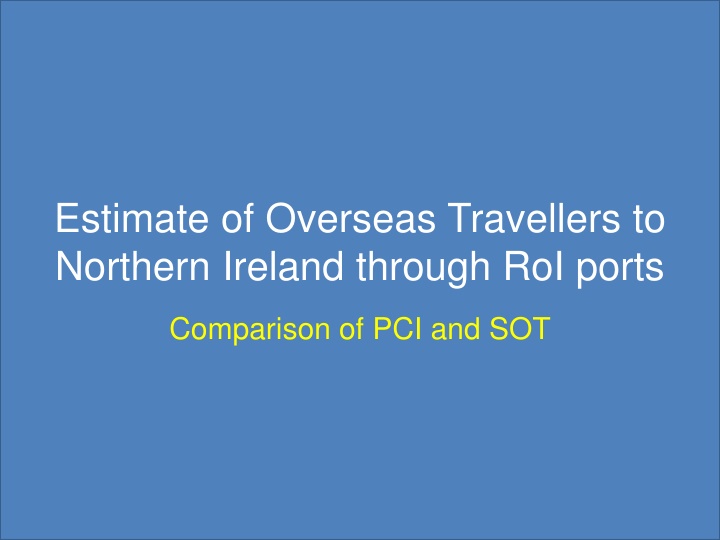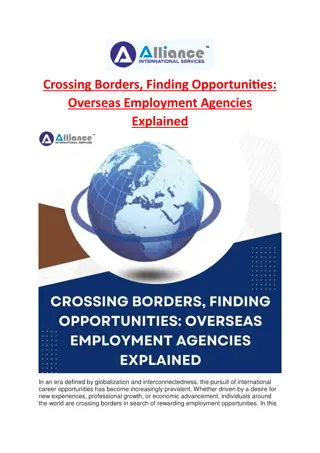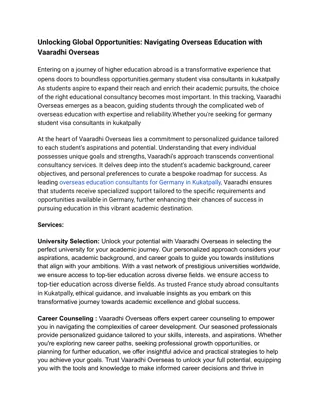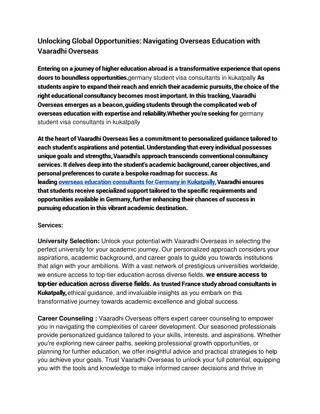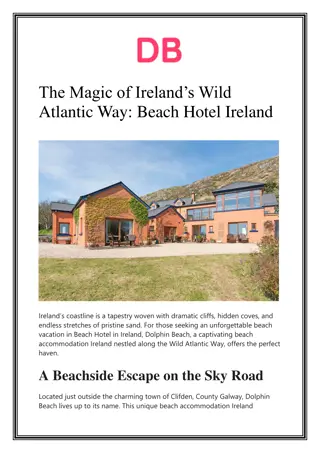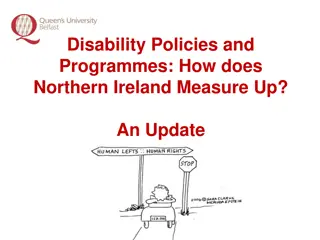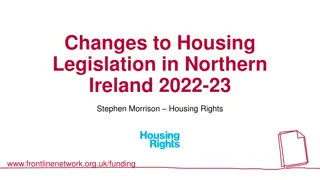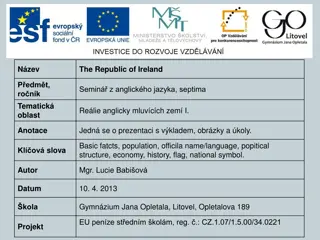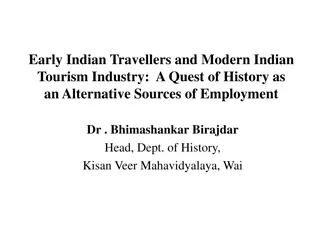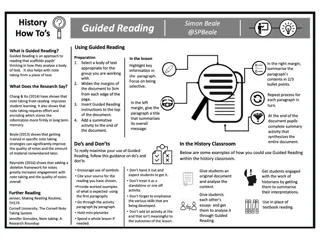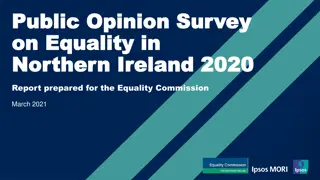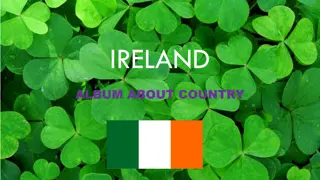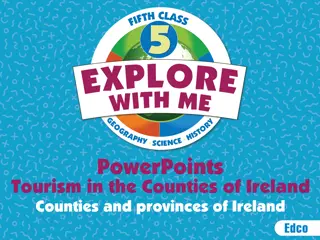Comparative Analysis of Methods for Estimating Overseas Travellers to Northern Ireland
This presentation delves into the methodologies employed by three surveys - Country of Residence Survey, Passenger Card Inquiry, and Survey of Overseas Travellers - to estimate the number of visitors to Northern Ireland through ports in the Republic of Ireland. By examining similarities and differences in data collection, weighting, and grossing processes, it provides insights into the accuracy and coverage of these estimates. The surveys utilize various techniques such as on-the-spot error checks, questionnaires, and weighting adjustments to arrive at reliable estimations. Understanding these methodologies is crucial for policymakers and stakeholders involved in tourism planning and development in Northern Ireland.
Download Presentation

Please find below an Image/Link to download the presentation.
The content on the website is provided AS IS for your information and personal use only. It may not be sold, licensed, or shared on other websites without obtaining consent from the author.If you encounter any issues during the download, it is possible that the publisher has removed the file from their server.
You are allowed to download the files provided on this website for personal or commercial use, subject to the condition that they are used lawfully. All files are the property of their respective owners.
The content on the website is provided AS IS for your information and personal use only. It may not be sold, licensed, or shared on other websites without obtaining consent from the author.
E N D
Presentation Transcript
Estimate of Overseas Travellers to Northern Ireland through RoI ports Comparison of PCI and SOT
Estimates of Visitors to NI through RoI ports 3 surveys collect information on Visitors to Ireland (2 specifically ask questions for NI) Country of Residence Survey Passenger Card Inquiry Survey of Overseas Travellers This Presentation looks at Methodology of 3 surveys Similarities and Differences of PCI and SOT Options for NI estimates
Country of Residence Survey (CRS) - 1 in 5 IN and OUT bound passengers asked Country of Residence - Grossed to Population Total (Airport and Ferry companies provided)
Passenger Card Inquiry (PCI) Outbound -Card given to everyone on shift -filled in by Passengers living outside the Republic of Ireland (NI removed at later question) -Two questions for those visiting NI (no data on expenditure) - Important question -The number of people covered by cards grossed to CRS
Survey of Overseas Travellers -16+ only -Quota Sample -Filter questions: -How many nights in RoI -How many nights in NI -Grossed to CRS minus RoI residents, NI residents minus Day Trips -Things to note: -oversampling in Continental routes, - maximum weight applied, -NI only weight ? -Despite sample 16+- weighted to All
Similarities and Differences between SOT and PCI - Methodology SAMPLE DATA COLLECTION WEIGHTING/GROSSING SOT CAPI (map of Ireland including NI) On spot error checks SOT weight all interviews (16+) to population (CRS minus day trips and residents of Ireland) -Maximum weights Sample size SOT (6,500) PCI (63,300 Cards 126,000 people) -Same population (PCI 99% coverage ports, SOT 97% coverage) PCI Cards (duplication, paper based limited direct validation) PCI -weight all people covered on cards Both grossed to CRS (so no difference for all Ireland estimates)
Visitors to Northern Ireland Northern Ireland VIAs who depart from RoI ports (2013) Survey of Overseas Travellers Passenger Card Inquiry -unweighted sample size 63,300 cards (representing 126,000 people) -unweighted sample size 6,500 Similar unweighted proportion of sample size 8% cards reported visit NI 10% people covered on cards visit NI - 7% visit NI
Impact of Differences in Results (2013) Larger estimate of trips to NI if NISRA was to use the PCI - equates to 7% difference to the overall estimate of ALL overnight trips in NI If / when NISRA changes source for data there will be a break in series - consequences for any targets (baseline changes)
Options for NI estimates Continue using SOT - trendline Switch to PCI from 2015 - break in series - model expenditure/missing variables (?) - potentially another break in series when CSO change methodology Continue using SOT until PCI methodology changes (CAPI) - break in series - collection similarities to NIPS
Selected Option Continue using SOT until PCI methodology changes (CAPI) - break in series - methodology - no need for a model - expenditure will be collected
